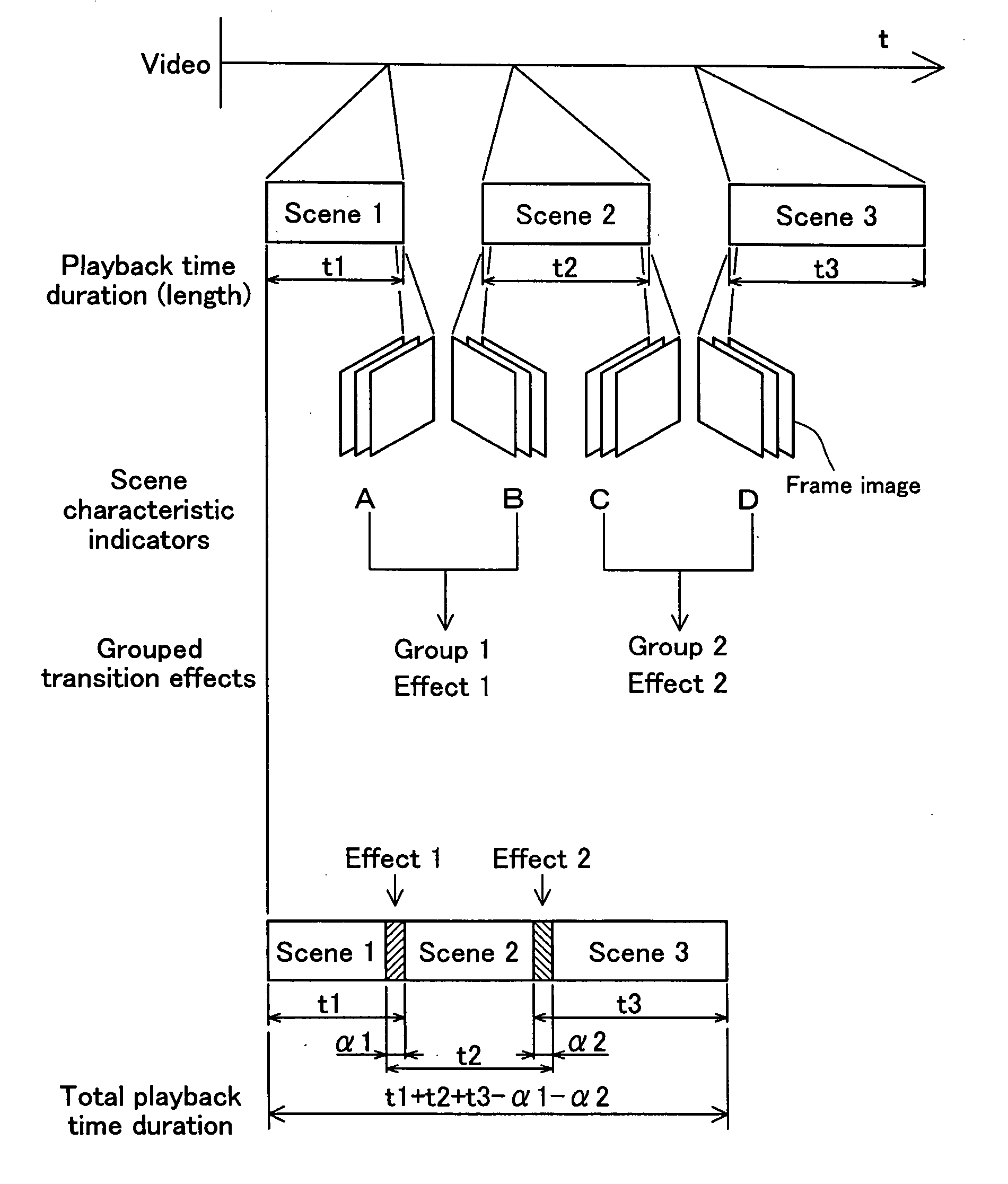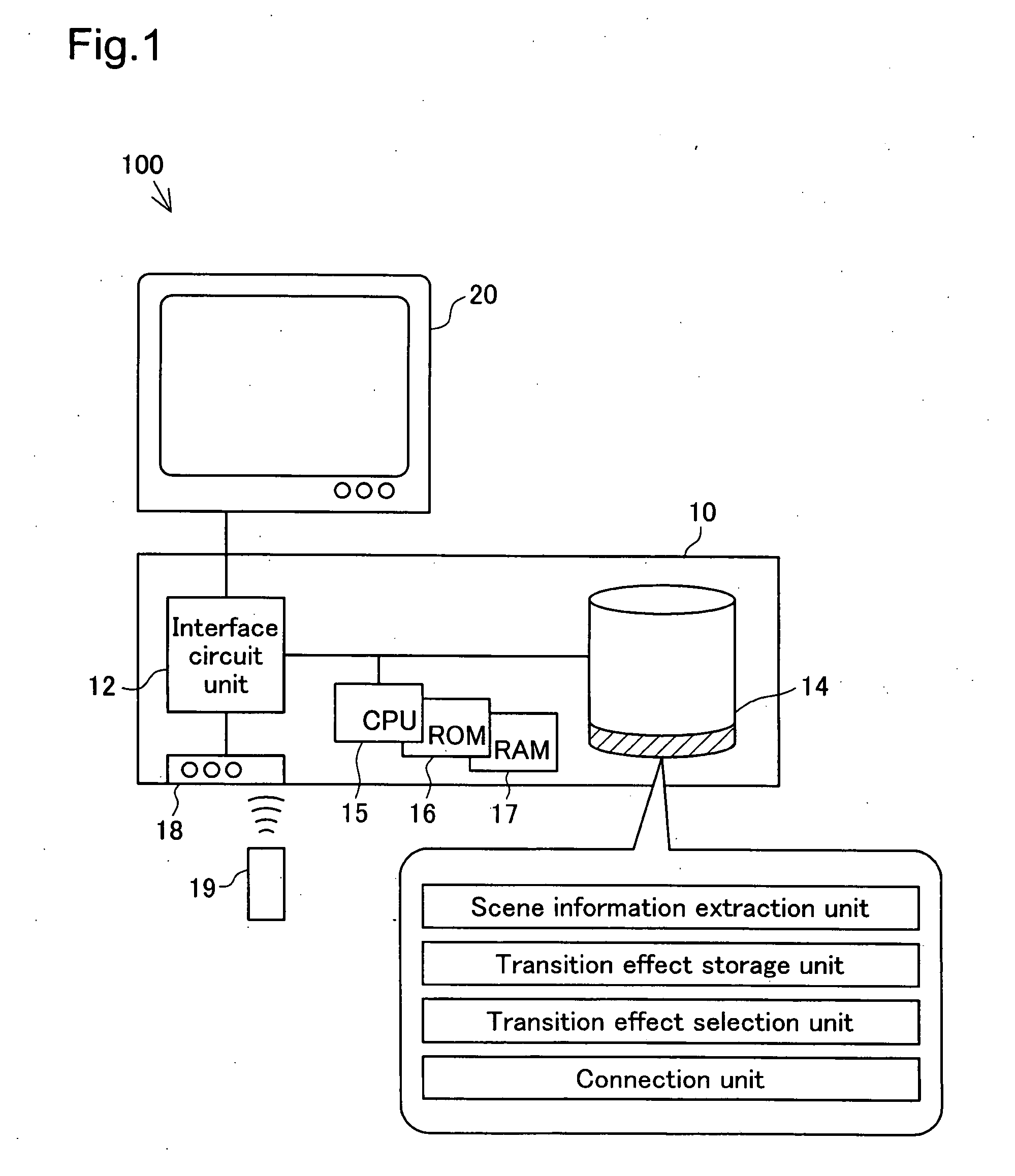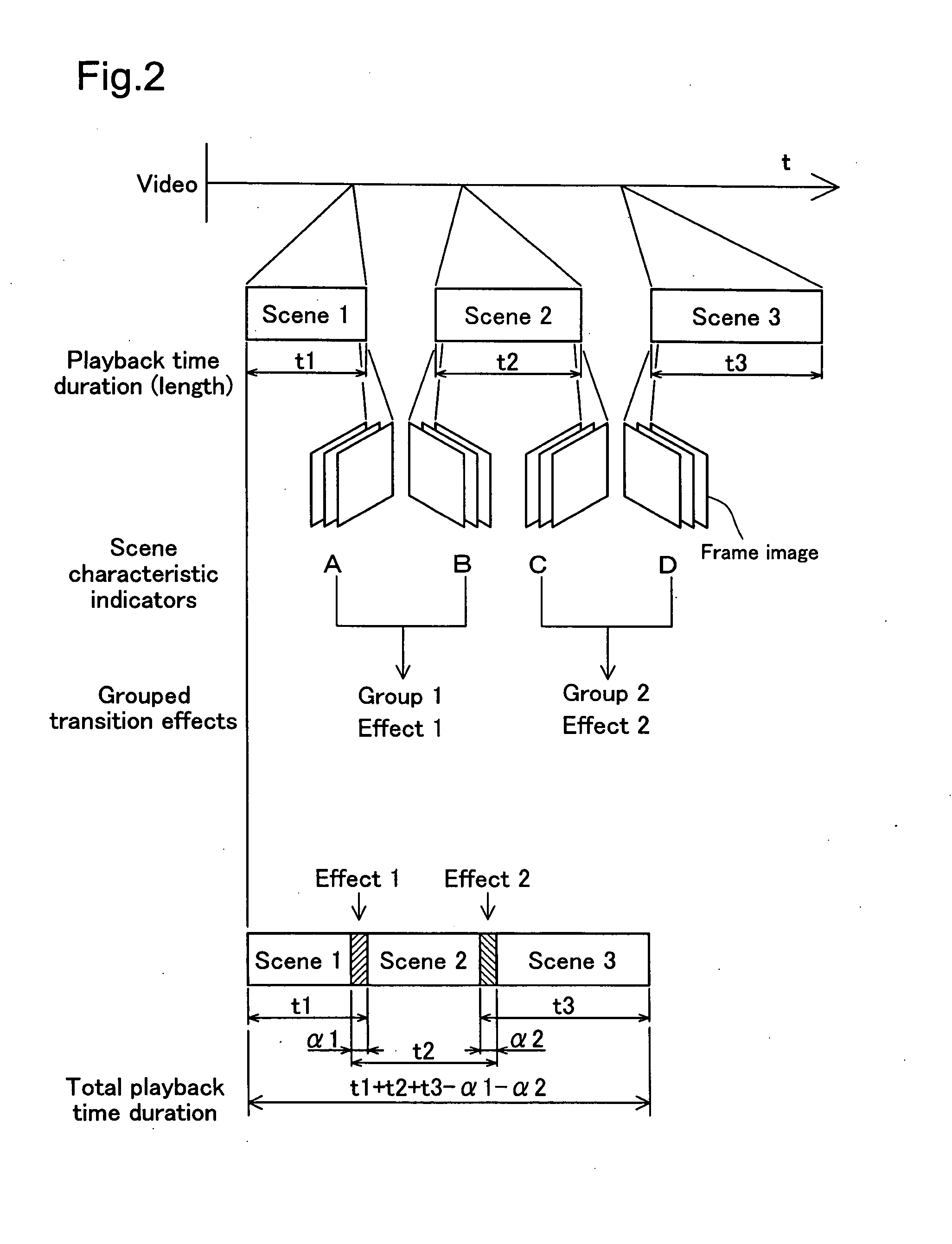Image processing device and image processing method
a technology of image processing and image, applied in the field of image processing technology, can solve the problems of requiring complex operations, no effective scene change process, difficult to watch video in digest mode, etc., and achieve the effect of reducing the overall length of the outputted video image and reducing the overall length of the video image generated
- Summary
- Abstract
- Description
- Claims
- Application Information
AI Technical Summary
Benefits of technology
Problems solved by technology
Method used
Image
Examples
first embodiment
A. First Embodiment
[0059] A1. Structure of the Image Processing Device
[0060]FIG. 1 is an explanatory figure showing an image processing system 100 that is a first embodiment according to the present invention. As is shown in the figure, this image processing system 100 comprises a hard disk drive (HDD) recorder 10 that records and plays back specific video images, a TV monitor 20 that is connected to the HDD recorder 10 and that displays the video images, and the like.
[0061] The HDD recorder 10 has a variety of functions for editing the stored video images. For example, there is an indexing function that detects automatically changes in scenes in the video image to create an index (with thumbnails) of frame images that represent each scene, and a digest function that extracts a portion of the video image for each scene and that joins together these portions to produce a digest video. This type of automatic detection of scene changes is performed through the detection of changes in...
second embodiment
B. Second Embodiment
[0110] As with the first embodiment, an image processing system according to a second embodiment of the present invention will be explained next. The image processing device according to the second embodiment is an HDD recorder equipped with image processing programs. The HDD recorder in this second embodiment differs from that in the first embodiment only in the image processing programs. Consequently, in terms of the hardware configuration, the same codes as for the image processing system 100 in the first embodiment will be used, and further explanations thereof are omitted. The details of the image processing will be explained.
[0111]FIG. 13 is a flowchart of the image processing in a second embodiment of joining together specific scenes of a video image. The image processing of this second embodiment adds a step wherein a cut change, wherein the scene changes suddenly, is selected in addition to the image processing of the first embodiment. The other steps a...
PUM
 Login to View More
Login to View More Abstract
Description
Claims
Application Information
 Login to View More
Login to View More - R&D
- Intellectual Property
- Life Sciences
- Materials
- Tech Scout
- Unparalleled Data Quality
- Higher Quality Content
- 60% Fewer Hallucinations
Browse by: Latest US Patents, China's latest patents, Technical Efficacy Thesaurus, Application Domain, Technology Topic, Popular Technical Reports.
© 2025 PatSnap. All rights reserved.Legal|Privacy policy|Modern Slavery Act Transparency Statement|Sitemap|About US| Contact US: help@patsnap.com



